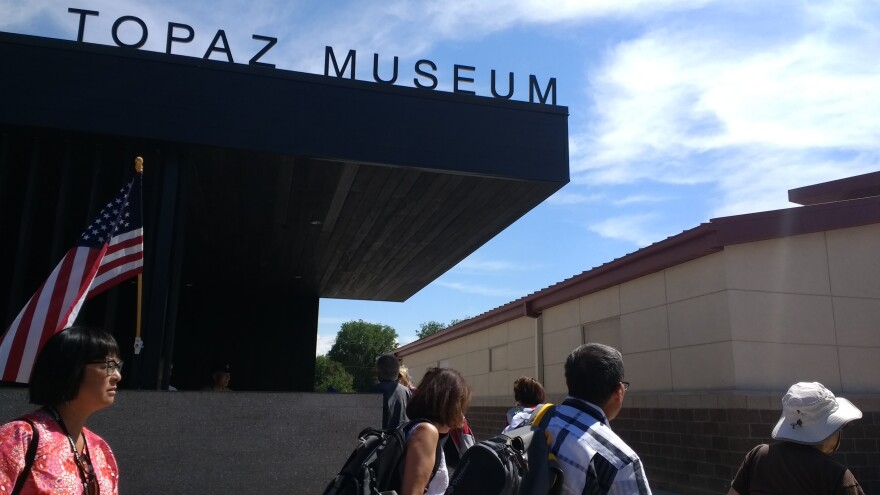A new museum honoring the history of a Japanese internment camp located in Central Utah opened on Saturday.
Attendees of Topaz Museum’s grand opening were given a tour of the original internment campsite on their way to the museum.

The air was hot and dusty. Cracked desert soil and fields of brush stretched to the horizon in every direction. The bus passed scattered ruins within the nearly 20,000-acre interment camp.
In the middle of an idyllic farming town called Delta once stood the Topaz War Relocation Center.
“Many of the Japanese Americans from California ended up in Utah, specifically the area around Delta,” said Don Tamaki, a lawyer from San Francisco and an expert on Japanese internment. “And ultimately about 11,000 people were confined there during WWII merely because they happened to look like the enemy."
The camp came about following the attack on Pearl Harbor.
In 1942, President Franklin Roosevelt issued Executive Order 9066 resulting in over 100,000 Japanese men, women and children being relocated to American concentration camps.
Almost a century later, Jane Beckwith, director of the Topaz Museum Board, was compelled to create a place where people could learn about Topaz
“This museum is talking about a time in history that’s underserved; not many people know about this history,” Beckwith said. “And yet, at the same time, it’s based on hate and fear -- and anger -- and reprisals; things we can do too easily without even thinking.”

Inside the museum, Irene Lynette admired the artifacts left over from Topaz’s barracks. Cots, stoves and other weathered house items. Her parents, first generation Japanese Americans known as Issei, were sent to the Topaz camps in the '40s.
“Actually, my parents never talked about it,” Lynette said. “I was really surprised when people asked me, ‘Were your parents [sent to the internment camps]?’ And I said, ‘Yes they were.’ And I couldn’t give any other information because I couldn’t find it but now it’s finally coming out and I’m glad.”
Lynette hopes the museum will make the history of Japanese interment more transparent to future generations.
“For the next generation they have to know about this and they’re starting to know about it,” she said. “When I was in school, it wasn’t mentioned in history books; I don’t understand that and that’s apart of America.”


